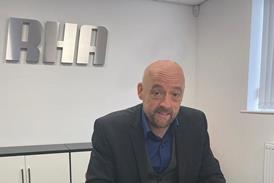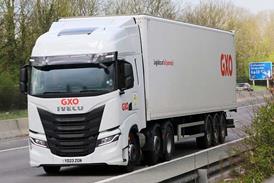
Hermes has slashed its CO2 output by 6% in the past year, with the business achieving savings of 18.4% since 2008. The parcels firm has set itself a target of a 20% reduction by 2015.
The reductions are part of a strategy implemented by German parent Otto Group, which requires a 50% reduction across the entire business by 2020.
In the past 12 months, Hermes has adopted automated transmission across all tractor units within its trunking operation, which has improved fuel efficiency by around 10%. The company will now roll-out the same technology across its van fleet.
All new tractor units also include aerodynamic kits and the company is trialling aerodynamic bodies within the van fleet, which has so far achieved an average fuel saving of 4%.
In addition, last year Hermes took delivery of eight double-deck trailers from Don-Bur to improve efficiency on trunking routes. As a result, the company expects to reduce its carbon footprint by as much as 2% by cutting miles travelled by 684,000 annually and saving 300,000 litres of fuel, equivalent to 800 tonnes of CO2 emissions.
Hermes is also exploring ways of reducing energy consumption across its nationwide network of hubs and depots. For example, traditional warehouse lights (sodium diode) have been replaced with more efficient LEDs at five sites within the depot network, with a further four locations planned for 2012. This has achieved efficiency savings of a third and reductions in CO2 of more than 25 tonnes per location.
A proportion of electricity has also been purchased from renewable sources, enabling a reduction of carbon emissions by approximately 1,600 tonnes per year, while the introduction of a recycling initiative for metal, cardboard and plastics has reduced the amount of waste going to landfill sites by 187 tonnes.
Carole Woodhead, CEO of Hermes UK, says: “Climate protection is a fundamental responsibility for all businesses and individuals, so we are fully committed to the targets outlined by the Otto CO2 strategy. We are well ahead of schedule, but will need to maintain our focus to achieve continued improvements in terms of emissions and efficiency savings.”













![Mercedes-Benz_eActros_600_(1)[1]](https://d2cohhpa0jt4tw.cloudfront.net/Pictures/274x183/8/2/0/17820_mercedesbenz_eactros_600_11_978080.jpg)


